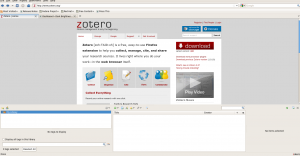There are three big distros for Linux — ubuntu, opensuse and fedora. In the last few months I have used all three.
The criteria I have are:
1. Must be backed up and supported by my work (Ubuntu LTS, Fedora)
2. Must be able to handle and encrypted LVM
3. Must be able to do a RAID
4. Must play nicely with dual screens using NVIDIA and RADEON.
5. Must support my essential software list: gnome, openoffice, skype, R and bibus.
Ubuntu LTS does all of these. So does SUSE. Fedora — does not work on the work box (a toshiba).
However, there is now a fourth requirement. I enjoy playing with OS, and I want to be almost current. I therefore want a rolling release. You see, the problem with SuSE and Fedora is that upgrading either requires you go to their bleeding edge (rawhide or factory) or you download each release and lose two days getting everything back the way you like it.
There are three approaches to this. One is to use a source based distro such as gentoo or linux from scratch. Haven’t done that for a few years now. The second is to use a rolling version of debian, either testing or sid with a safety net — aptosid. The final idea is to use Arch Linux.
Herein lies some problems. Aptosid can’t handle my R710 card. Arch can… but can’t dual screen easily (and the person who turned xorg.conf into thirteen seperate files needs to he introduced to a LART).
Ubuntu — at least the RC version of 10.10 — does not play well with any of my hardware. SuSE just works. But that leaves me on the upgrade cycle. There may be an ideal OS — and Arch is close to it — but I have not found it yet.

